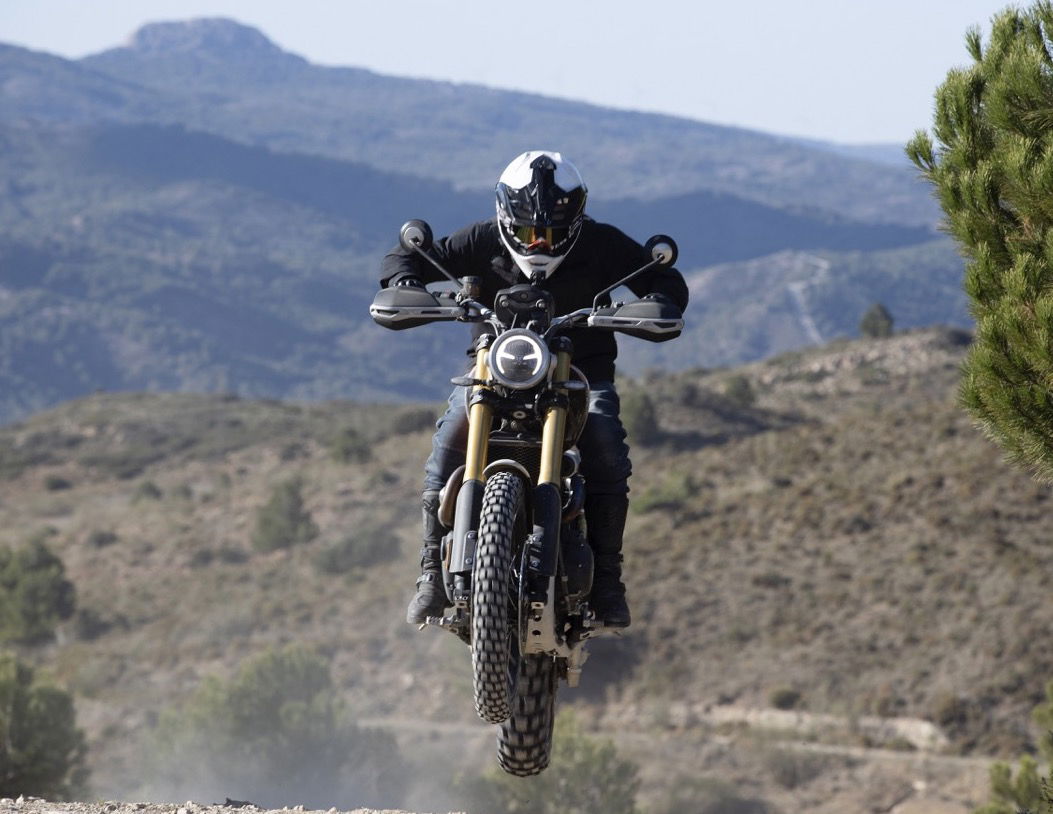Suzuki GSX-S1000 GX review: superbike-engined 'crossover' is a bargain tech fest
This new adventure tourer or 'crossover' blends familiar, old-school Suzuki ingredients with modern tech. We found out how all that works in reality
.JPG?width=1600&aspect_ratio=16:9)
At long last, Suzuki has a stream of genuinely all-new bikes. The GSX-8S, GSX-8R, V-Strom 800 DE and V-Strom 800 RE all use a fresh frame and engine combination - something we haven’t seen from the Japanese manufacturer in years.
The same can’t quite be said for the GSX-S1000 GX. Instead, it does something a little different - taking some tried and tested (or ancient, depending on how mean you want to be in formulating a description) materials and enhancing them with technology it’s never used before.
The GX is best thought of as a taller, longer-travel GSX-S1000 GT but with a drastic increase in technology, the centrepiece of which is Suzuki’s first-ever use of semi-active suspension. After digesting the gigantic press release (all 64 pages of it), we headed to Lisbon to ride the bike on over 200 miles of varied roads to see how all of that works out in practice.
Price, availability and colours
The GSX-S1000 GX costs £14,449, and there isn’t a single option you can add on the configurator - all of the fancy tech is included. There are official accessories, however, including panniers which are body-coloured and can be locked and unlocked with an ignition key.

There are three colour options, none of them especially exciting - Metallic Triton Blue (our choice), Glass Sparkle Black Pearl (bit boring) and Matt Shadow Green (so dark you might not spot it’s actually a colour).
Orders are open now, and the first deliveries are expected before Christmas 2023.
Engine, frame, chassis and technology
The GX shares its 999cc inline-four with the aforementioned GT, along with the GSX-S1000 naked and the Katana. Yep, it’s the ‘K5’, an engine so old you wonder if archaeologists might dig up an old crankcase from Pompei at some point. But it’s a relic we’re happy is still around, being something of an icon.
It develops 150bhp at 11,000rpm, and 78lb ft at 9,250rpm, and breathes through a four-into-two-into-one exhaust. In terms of fuel economy, it’s good for a very specific 45.47mpg according to Suzuki’s official figures. That’s a slight drop compared to the GT, we’d imagine due to the more upright riding position increasing drag.
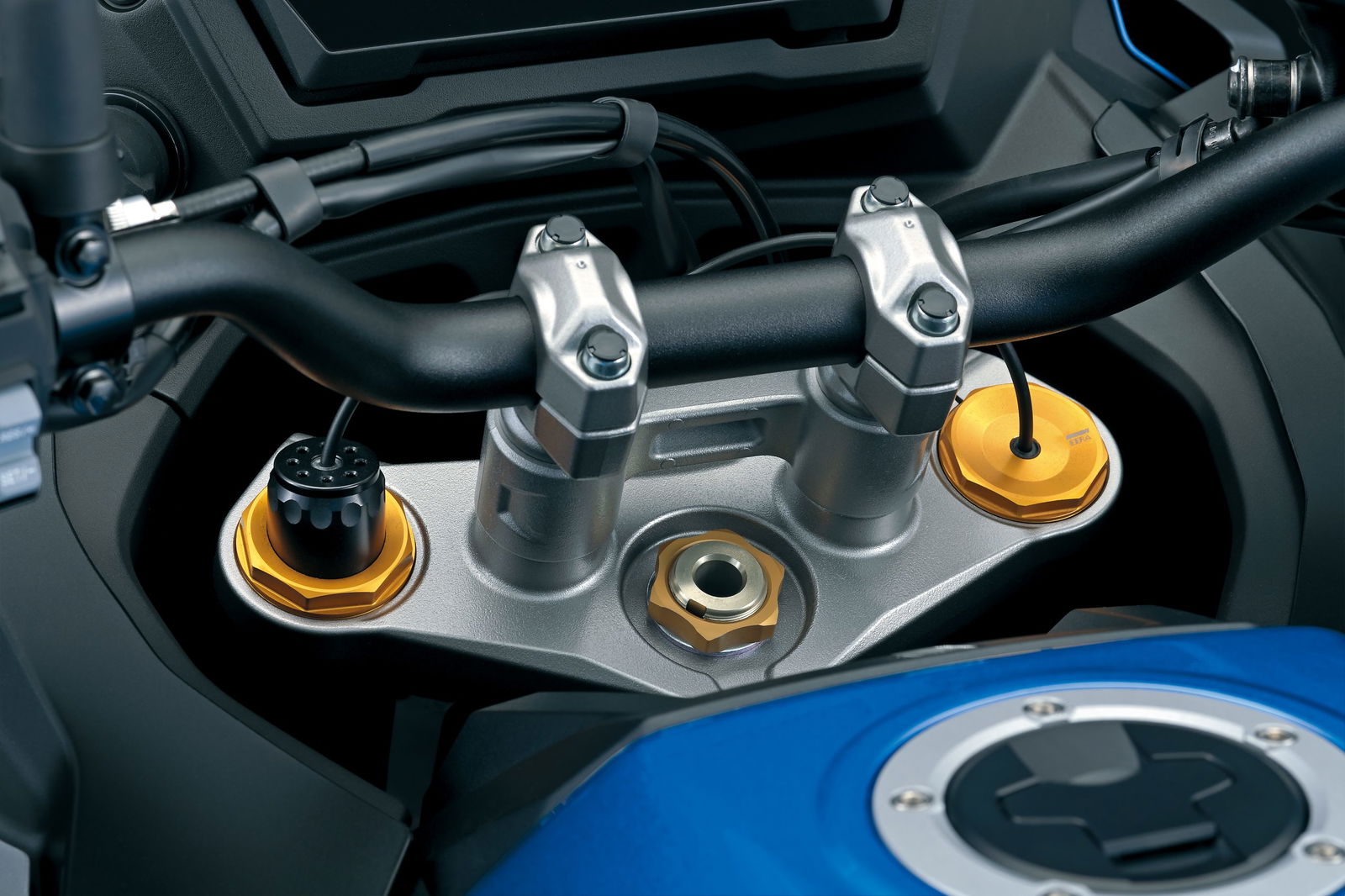
The engine sits in the familiar twin-spar aluminium frame of the GX’s engine-mates, while the separate subframe is shared with the GT. The GX starts to deviate in terms of its riding position, with handlebars that are 55mm closer to the rider and also 50mm wider. You also sit behind a new half-fairing with a taller windscreen, which - annoyingly - can only be adjusted via removing and refitting three allen bolts. The rider’s seat is thicker, while the pillion’s is both thicker and 26mm wider.
Although it might look like an ADV at first glance, the GX really isn’t, as evidenced by the use of 17-inch wheels front and rear, wrapped in Dunlop Sportmaxx Roadsport 2 tyres. Braking, meanwhile, is taken care of by four-piston Brembo callipers squeezing twin 310mm discs at the front and a single disc at the rear, working with cornering ABS.

The suspension is where things start to get quite complex. The hardware comes from Showa in the form of SFF-CA (Separate Function Fork - Cartridge) forks and a BFRC-lite shock giving 150mm of travel at both ends. The former element includes an electronically controlled solenoid valve which varies the compression and rebound 1,000 times a second, while the shock is hooked up to a remote reservoir nestling under the pillion seat containing a motor that controls a divider plate, whose position determines the hydraulic pressure. This allows for the preload to be adjusted automatically.
Exactly how all that stuff behaves is determined by the electronics that Suzuki has developed to go with it, for which there are acronyms. Many acronyms. The overarching setup is referred to as Suzuki Intelligent Ride System (SIRS), while the semi-active suspension itself is called Suzuki Advanced Electronic Suspension (SAES).
Further subsets of that include Suzuki Floating Ride Control (SFRC) which automatically adjusts the suspension settings based on readings from the six-axis IMU, Suzuki Deceleration Damping Control (SDDC) which combats brake dive, and Suzuki Velocity Dependent Control (SVDC) which tweaks the setup according to the bike’s speed to achieve “positive handling at low speeds as well as reassuring stability at high speeds,” according to Suzuki.
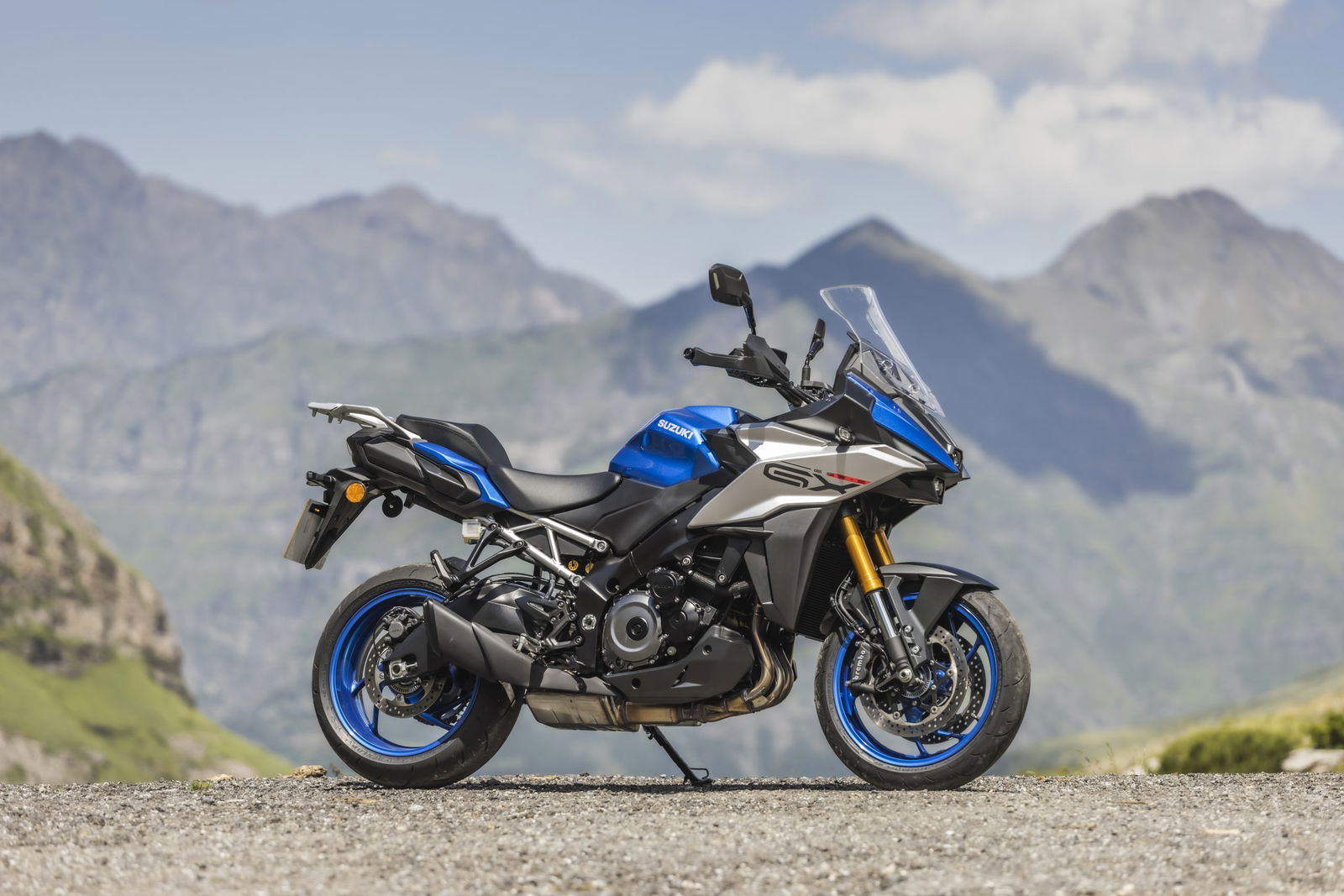
‘FFS’ is probably the acronym you have in mind after reading all that, but the main user interaction with that stuff is a simple and familiar process - Suzuki Drive Mode Selector-Alpha (SDMS-α - another one, sorry) with A, B and C modes displayed on the 6.5-inch colour TFT. These determine which of the seven traction control settings (eight if you include off) the bike uses, how aggressive the throttle is, and the firmness of the suspension (soft, medium or hard).
It’s possible to change any one of those settings and save it into a user setting, or if you wish, go either three steps firmer or three steps softer than any of the core suspension settings. But, as we’ll explain later, you don’t need to worry about delving into the minutiae if you really don’t want to.
What’s it like to ride?
Still with us after that big tech dump? Good. We’ll get back to the fancy-pants suspension stuff soon, but first, we want to talk about the engine. It’s a classic of the genre we’re familiar with, so it doesn’t give much in the way of surprises, just a smooth, linear pull up to its near-12,000rpm redline amidst an old-school superbike soundtrack.

The only problem is, you won’t find yourself up there very often unless you want to risk some serious legal bother or commute along a section of derestricted autobahn. The gearing is unchanged from all the other K5-engined bikes, and that means the top end of first gear is troublingly close to 100mph (or so we’ve heard).
The good news is it’s a potent enough engine that it’ll respond keenly wherever in the rev range you’re sitting, so there’s little need to work your way through the transmission. For when you are doing so, the standard fit makes for effortless cog-swapping, and although we did get a couple of false neutrals, they were more likely down to being not quite aggressive enough with the left boot.
Although you are more upright on this bike than on the GT, there is still some forward lean (don’t expect a V-Strom-like riding position), and the pegs are fairly high. Combined with that small front, and the GX feels reasonably well at home on a twisty road. That is, if you stick to the Medium suspension mode.
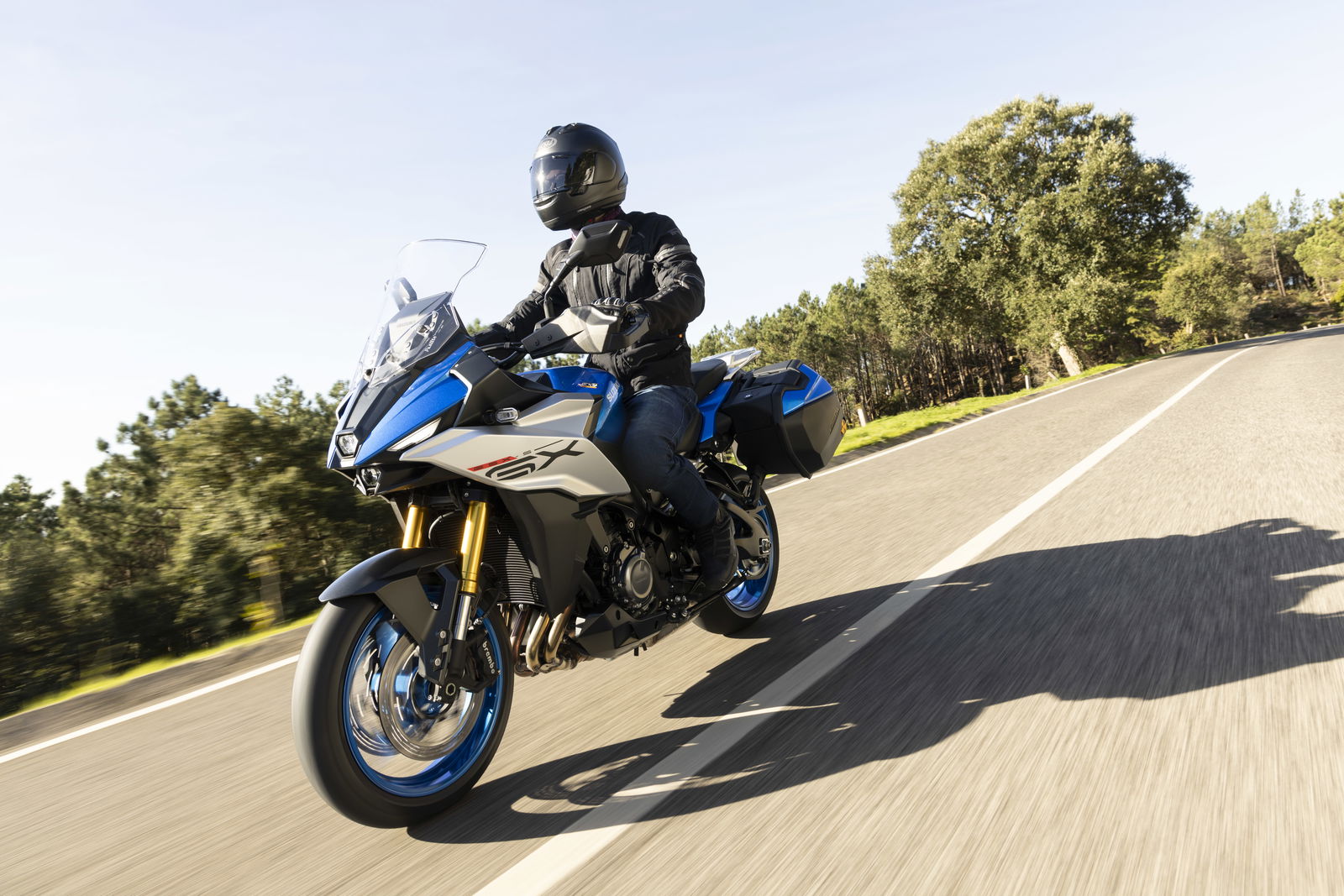
Soft is too soft for most situations - when roads are rough enough to warrant its use, the setting seems to lack control, making the bike feel like it’s getting away from you as it wallows through its travel. Although it seems counterintuitive, you do still want a reasonable amount of give in a bike’s suspension when dealing with bad road surfaces.
Hard on the other hand is, erm, too hard. At least for all but the smoothest of roads, anyway. Set thusly, the GX’s damping tends to be harsh, knocking your confidence when leaning the bike over while also hampering comfort. Yes, you can soften or firm up any of the settings, but doing so involves a sub-menu which makes the whole process feel a bit fiddly.
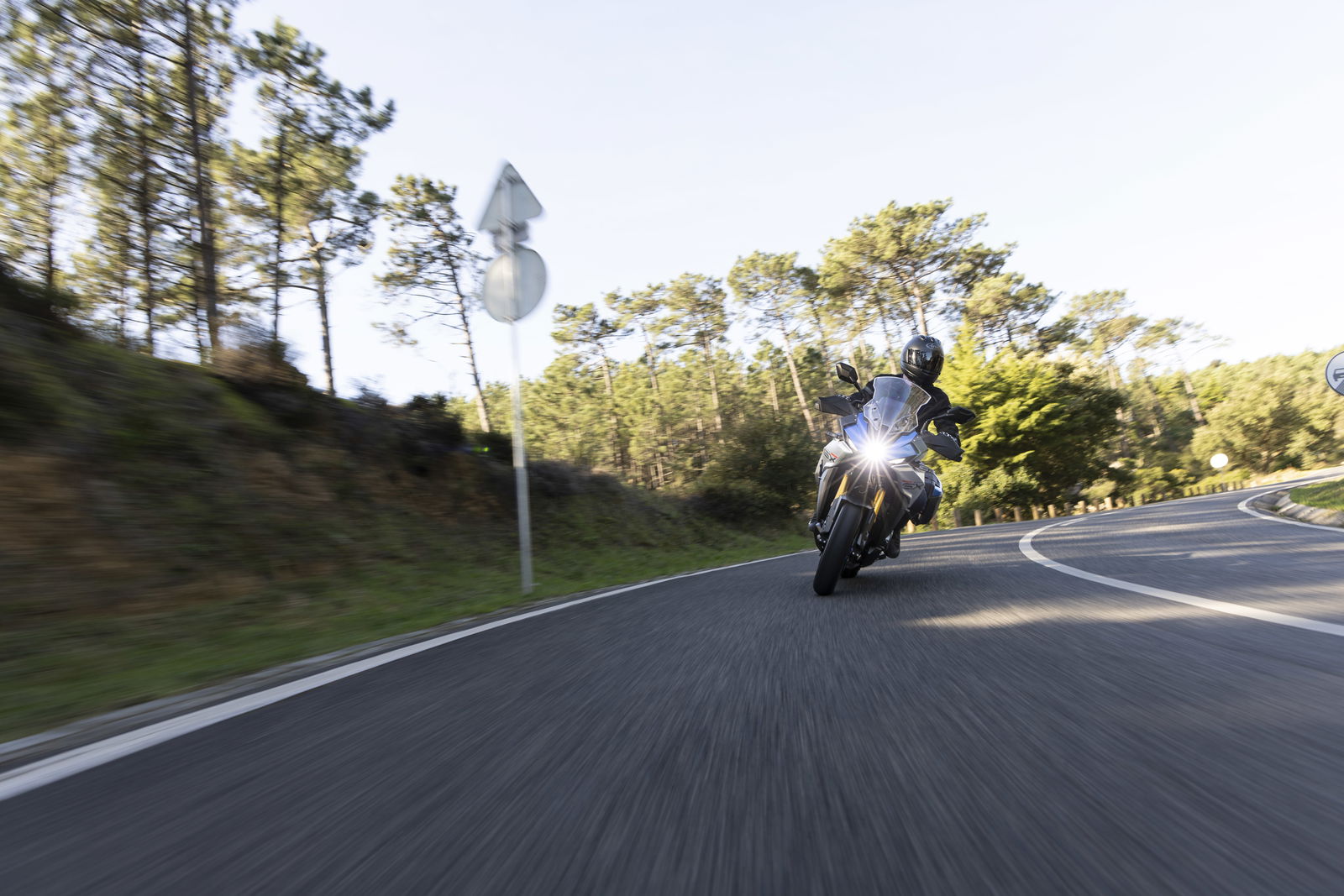
Medium, then, is where it’s at. The ride/handling balance is very well judged, presumably helped by those continual adjustments and the Suzuki Floating Ride Control enabling (as indicated by a little icon on the TFT) when presented with something like a cobbled street. The way the bike’s pitch is controlled also helps hide its 232kg weight, with the GX remaining reasonably flat whether you’re winding the throttle wide open or grabbing a lot of brake.
There was a lot of talk about tyres on the launch, with a general feeling that the Dunlop hoops felt a little vague in the corners. But given the ‘glossy’, often low-grip nature of a lot of the roads we were riding, we’d rather test the bike further on some roads closer to home before giving a definitive verdict on the footwear.
Should you buy a Suzuki GSX-S1000 GX?
A varied route taking in twisty roads, bumpy city streets and motorways showcased the GSX-S1000 GX as a very well-rounded bike that’d be great for long-distance touring. The suspension tech kept us comfortable on a fairly chunky day of riding, as did that thicker seat, and there is a girthier-still perch should you want your behind to be cosseted even further.

Perhaps due to that inline-four engine, though, the GX is maybe not the most alluring road-focused ‘crossover’ bike. The bike engine landscape has become more interesting and varied since the K5’s heydey, with all sorts of characterful alternatives including the Ducati Multistrada V4 S. Admittedly, that’s a much more expensive bike, but if you can cope with less power, the similarly priced Yamaha Tracer 9, with its fruity three-cylinder engine, could be a good choice too.
The GX is a more pragmatic choice, with value being its strongest suit. To get all that clever suspension tech, 150bhp and all the other toys for just over £14,000 seems like a bargain. Just to throw two other inline-four options into the mix, the Kawasaki Versys is more expensive spec-for-spec, not to mention older, while the recently updated BMW S1000 XR is several thousand pounds more when specced to the same level, although it does exude a more premium feel than the Suzuki.
If your buying habits tend to be led with the head rather than the heart, you can’t go far wrong with the GSX-S1000 GX.

